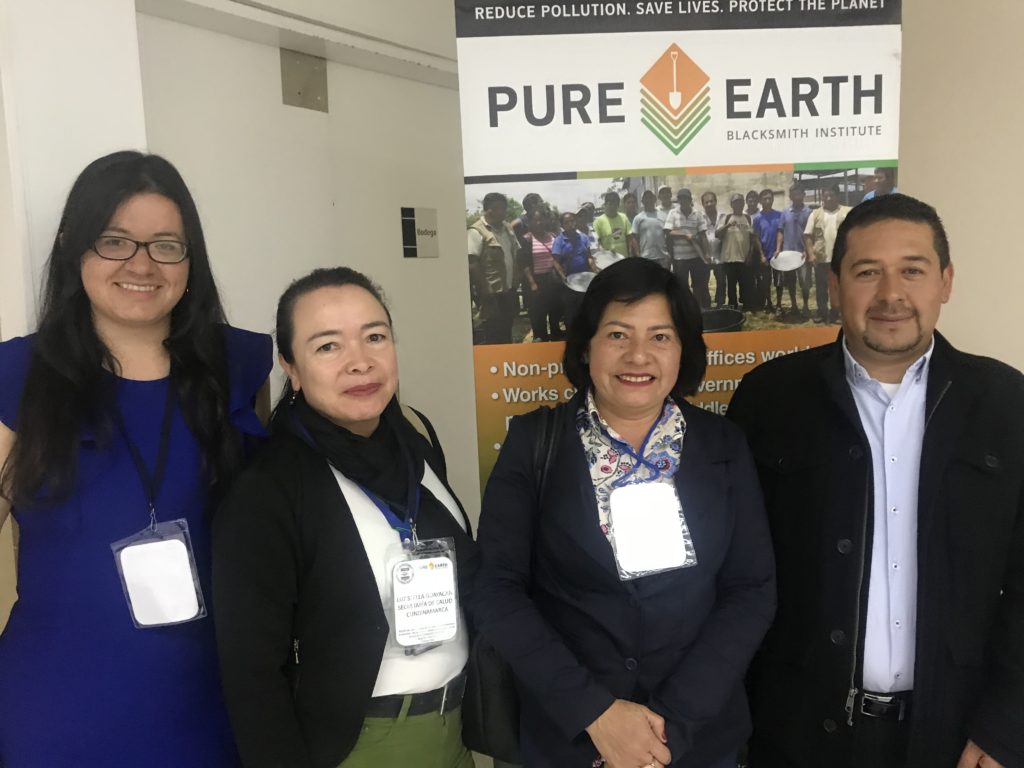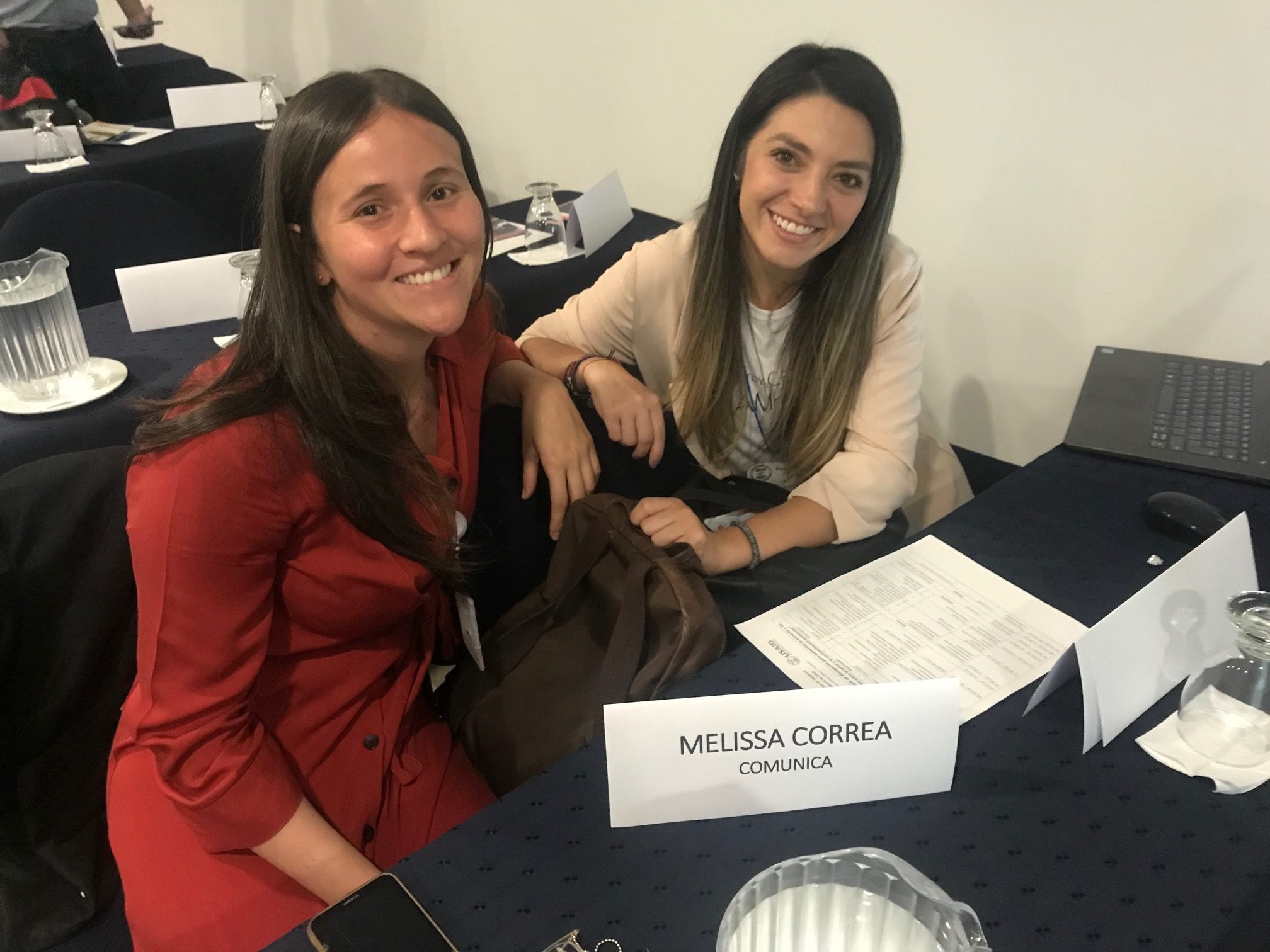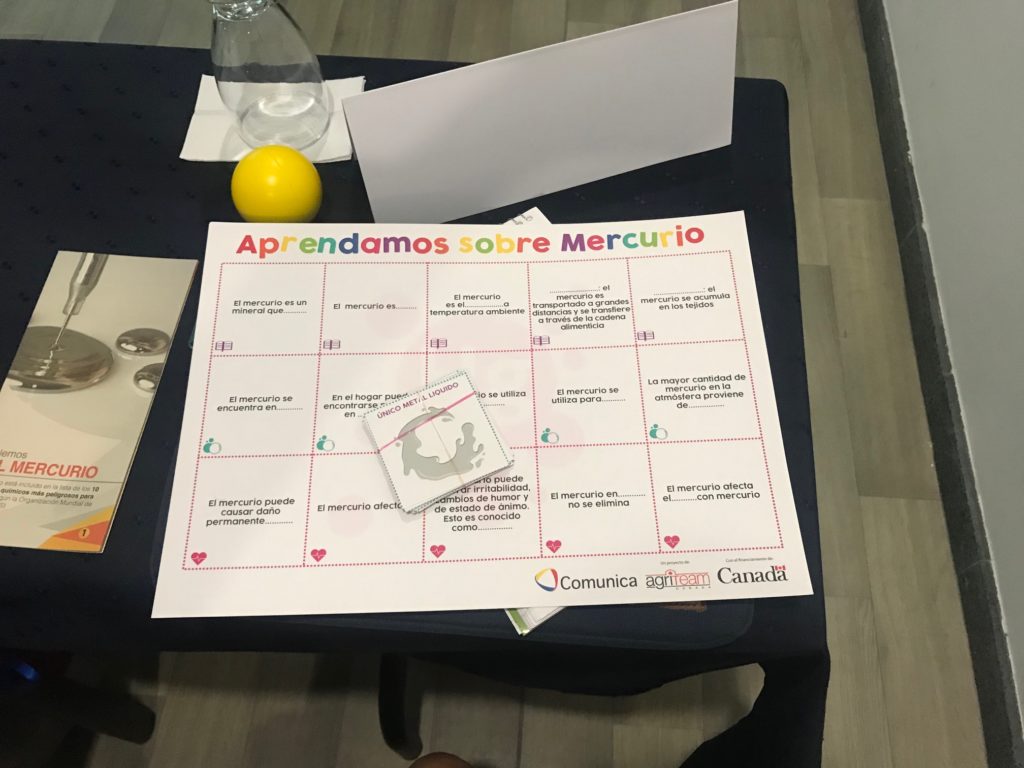Pure Earth kicked off its important global community outreach project on February 19th in Colombia, covered by the country’s premier news station, generating excitement at all levels, from the Ministry of Health to local NGOs working with indigenous people.
“The objective of the program is to bring together civil society groups, increase environmental health literacy, and support their efforts to address pollution threats in their communities,” says Lara Crampe, Pure Earth’s Director of Community Outreach.
The project will expand to two more countries over the next year.

In Colombia, Pure Earth joined forces with USAID and two local community groups – Sueño de Angeles and Comunica Colombia – to host a workshop, which brought together government ministries, local and international NGOs, and representatives of local community-based organizations from different regions of Colombia.
 Melissa Correa and Alejandra Jimenez from Comunica Colombia
Melissa Correa and Alejandra Jimenez from Comunica Colombia
Participants spent the day engaging in discussions about health and pollution, sharing ideas for engaging their constituents, and planning outreach to communities.
Presenters from Sueño de Angeles, Comunica Colombia, and the Ministry of Health presented examples of how they designed participatory communications programs that help communities talk about and understand diverse health issues in the country. This included a game developed by Comunica Colombia to teach young people about mercury poisoning.
A game developed by Comunica to teach children awareness about mercury poisoning
Pure Earth offered insight into how the Toxic Sites Identification Program works, and demonstrated the equipment our investigators use to identify toxic heavy metals in air, soil, and water.
Various health professionals shared data on the impact of pollution on Colombia’s population.
There was also lively Q&A, particularly about how to share resources with under-served communities, addressing recent concerns about air pollution in urban areas, and worries about pesticides and endocrine disruptors.

The lively Q&A session.
The meeting concluded with the group working together to build communications plans for three health-related pollution topics relevant to the constituents of the groups represented — air pollution in Medellin, mercury pollution in the Amazon region from artisanal small scale gold mining, and industrial pollution in key watershed areas.
 The meeting was an opportunity to share ideas across communities.
The meeting was an opportunity to share ideas across communities.
“It is so important to understand how to talk to local communities about the global impact of pollution through the issues that affect them most. Air pollution could be the big problem in the cities, but communities living near the rainforest might be more concerned about mercury poisoning from gold mining,” notes Cramp.
“We want to educate and raise awareness so that we get everyone talking to their neighbours, friends, family and others around them about pollution. We want to share strategies and resources with active local organizations that can reach people in their communities and teach them how to protect themselves, feel empowered to demand action, and work together to support pollution solutions that saves lives.”
Participating organizations will be working with Pure Earth over the next year to develop creative, engaging outreach and communications activities that will bring attention to pollution issues affecting health and well-being in Colombia.
This project is funded by USAID.







